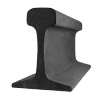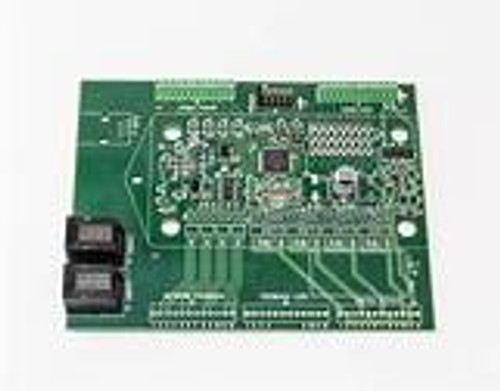DCC Specialties Jack Wabbit Quad For Tortoise & Snap Coil Turnout Motors With LocoNet
The Jack Discrete Sensor is designed to work only with Digitrax LocoNet Systems. The Jack Discrete Sensor is a derivative of the Jack Wabbit Quad decoder that takes advantage of the Jack Wabbit LocoNet interface and the ability of the Jack Wabbit to read both discrete inputs and DCC voltages.
The Jack Discrete Sensor can read any combination of up to 8 discrete or DCC inputs. Whenever an input changes state (e.g. on/off, DCC present/absent), a General Sensor Input message is sent on LocoNet indicating the address of the changed sensor and the new state of the sensor.
The Jack Discrete Sensor is designed to provide layout status information to automation programs such as JMRI via the LocoNet. Note the sensor messages are not available for display on the throttle, but are available to the automation software for layout control. Sensor inputs can include block detectors, manual toggle switches, Tortoise or other switch machine position switches, optical couplers, or almost any type of sensor that provides an on/off switch contact. Unlike other available LocoNet interfaces, the Jack Discrete also has inputs that can be directly connected to the DCC bus or track. These inputs detect the presence or absence of DCC and can be used to sense the power status of a power district (on/off) by direct connection to the bus or track. Another use is train sensing using a trigger rail. You can isolate a short section of rail (1/2” to 1” for example) and connect it to a DCC sensing input on the Jack Discrete. When the engine bridges the isolated track to the main track, the trigger rail is connected to DCC and a message is sent on LocoNet which can be used by the automation software to determine a specific engine position.
Many DCC Specialties products have feedback outputs. The Jack Discrete is specifically designed to allow you to connect these devices to LocoNet for use by your automation software. The Hare and Wabbit can use the Jack Discrete to report switch position (the Jack Wabbit will report position directly), while the PSX and PSX-AR can report output power status, short status, and block occupied for use by your control software.
Each Jack Discrete occupies 4 LocoNet addresses and will provide a total of 8 sensor status input to LocoNet. The inputs can be 8 discretes, 8 DCC signals, or any combination of discrete and DCC that totals 8. Multiple Jack Discretes can be used simply by giving each one a unique LocoNet address.
Jack Discrete Absolute
The Jack Discrete absolute is designed to work only with Digitrax LocoNet Systems and is virtually identical to the Jack Discrete Sensor except that it sends a Turnout Sensor State message instead of a General Sensor message. This means that the message is intended for display on your throttle rather than for use by automation software.
The ability to display absolute position information on your throttle is an important function when you use DCC Specialties switch control products. The Digitrax throttle remembers the last DCC point position command, which will work if you only use DCC commands. However, the Hare and Wabbit can change point position without a DCC command (manual control inputs and autothrow) which will make the throttle displayed point position incorrect. With the feedback outputs connected to a Jack Discrete Absolute, the point position reported by the throttle will always be correct regardless of the point change method. Note that in some instances that the throttle SWCH button must be presses to get the throttle to update the display.
While primarily intended for switch position reporting, the Jack Discrete Absolute can also be used with the PSX breaker and PSX-AR. You can use your throttle to tell you if a PSX is on or off, shorted or not, and whether the photo cell function is armed or not by tying the appropriate PSX feedback outputs to a Jack Discrete Absolute.






